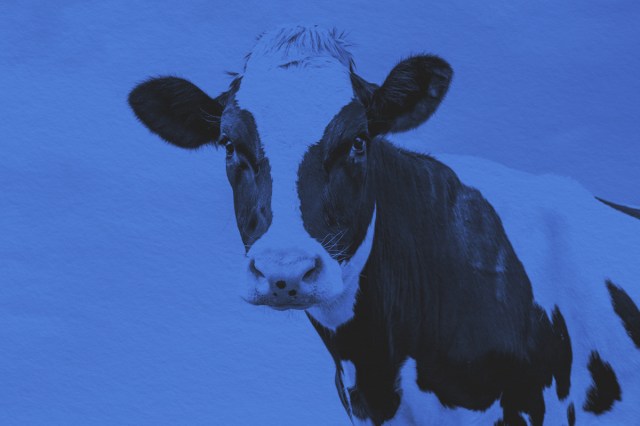
Why does an owl say “hoo hoo” in English but bu-eong-bu-eong in Korean? It all comes down to phonology, which is “the branch of linguistics that deals with systems of sounds within a language or between different languages.” While a cat in France makes the same sounds as a cat in Germany, the depiction of those sounds, both written and vocalized, is interpreted very differently.
Research also suggests that the more connected a culture is with an animal, the more versions of sounds they will have for it. Could this be why in English dogs can “bark,” “woof,” “yap,” and “ruff,” but mice can only “squeak”? Let’s explore more of the onomatopoeia of animal sounds around the world.
English: “Buzz”
Since the late 14th century, “buzzing” has been used in English to denote the noise that bees and other flying insects make as they fly by. The “z” sound made by pollinators is also reflected in other languages around the world, such as in the Arabic zzzu zzzu and the Russian zh-zh-zh. However, there are a few outliers, including Japan’s unique (but just as charming) boon boon.
French: Bzzz
German: Brummen and summen
Mandarin: Wēngwēng
Korean: Wing-wing
English: “Meow”
In English, we’ve been using the word “meow” for the sound a cat makes since the mid-19th century, but even before then, similar spellings of “miaow,” “miau,” and “meaw” were in print. This animal noise is one of the most consistent across all languages — most of the world agrees on the “m,” followed by a similar vowel sound. Some languages also have words for purring, which is called ronron in French and schnurren in German.
Japanese: Nyaa nyaa
German: Miau
Mandarin: Miāo
Spanish: Miau
Korean: Ya-ong
English: “Moo”
This simple onomatopoeia has been used in English since the mid-16th century, and across the world, most cultures agree on the noise a cow makes. One interesting exception is the Urdu language of South Asia, which uses the word baeh to describe a cow’s sound.
French: Meuh
Japanese: Moo moo
German: Muh
Mandarin: Mōu
Spanish: Mu or muuu
Korean: Uh-meh
English: “Woof”
“Woof” has been in use since the days of Old English, but it was first related to weaving wefts of fabric. It wasn’t until the early 19th century that it gained a new purpose as an onomatopoeia for a dog’s bark. While the spelling of the onomatopoeia can be quite different, the repetitive sound of a bark is consistent across most languages, including in Greek (ghav ghav)and Arabic (haw haw or hab hab).
French: Ouaf ouaf or wouf wouf
Japanese: Wan wan
German: Wau wau or wuf wuf
Mandarin: Wāngwāng
Spanish: Guau guau
Korean: Meong-meong
English: “Croak”/“ribbit”
In most English-speaking countries, “croak” is the traditional sound of a frog — only American frogs say “ribbit.” This might have originated in Hollywood when the recorded sound chosen for a frog wasn’t a low, hoarse croak, but the higher-pitched sound of the Pacific tree frog. (The word “ribbit” was coined by writers for the Smothers Brothers Comedy Hour.) But throughout the rest of the world, the most mimicked frog sound is a hoarse, croaking noise.
Japanese: Kero kero
Mandarin: Guāguā
Spanish: Cruá cruá, berp, or croac
Korean: Gae-gul-gae-gul
English: “Neigh”
In English, we call the sound that a horse makes a “neigh.” This comes from the Old English word hnægan, which was probably an imitative sound. However, there are other words to describe this sound, including “whinny” or “heehaw” (also used for other barnyard animals, such as donkeys and mules).
French: Hiiii
Japanese: Hihiin
German: Wiehern (neigh) or iaah (heehaw)
Mandarin: Mǎ (neigh) or sī (heehaw)
Spanish: Jiiiiiii or iiiiou
Korean: Hee-hee-hing
English: “Squeak”
“Squeak” comes from the Middle Swedish word skväka, meaning “to squeak, croak.” It entered English in the late 14th century and has been used to describe both creaking doors and scurrying mice ever since. The worldwide translation of a mouse’s squeak is varied, ranging from the Hebrew cleek to the Italian squitt-squitt — no two languages seem to totally agree on the sound of the little rodent.
French: Pitt pitt
Japanese: Chuu chuu
German: Piep-piep
Mandarin: Zhīzhī
Spanish: Cui-cui
Korean: Jjik-jjik
English: “Oink”
“Oink” wasn’t used in English to describe the noises of a pig until the early 20th century. This word is of imitative origin, but to other language speakers, it might seem rather unusual to imitate a pig’s grunt as “oink.” This is one of the most varied animal sounds across the world, varying from the Swedish nöff nöff to the Polish chrum chrum. However, languages across the world seem to be in agreement on one thing: A pig likes to repeat itself.
French: Groin-groin
Japanese: Buu buu
German: Grunz grunz
Mandarin: Hēnghēng
Spanish: Oink-oink or oinc-oinc
Korean: Kkul-kkul
English: “Cock-a-doodle-doo”
“Cock-a-doodle-doo” is arguably the most bizarre noise on this list. It’s an imitative phrase that has been used since the mid-16th century to describe the distinctive noise of a rooster (also called a “cock”) crowing.
French: Cocorico
Japanese: Kokekokko
German: Kikeriki
Mandarin: Wōwō
Spanish: Kikirikí
Korean: Kko-kki-oh
English: “Baa”
The bleat of a sheep is a seemingly universal sound. Even in Latin, the word bee meant “sound made by a sheep.” Most modern languages also agree on a “b” or “m” sound to begin this noise.
French: Bêê
Japanese: Mee mee
German: Bähh bähh
Mandarin: Miē
Spanish: Bee or mee
Korean: Meh-eh















